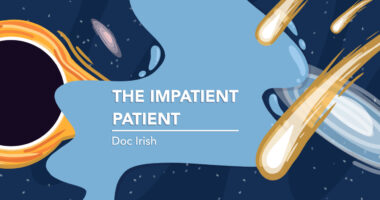Nonvisual hallucinations found to impact large number of patients
Hallucinations have significant effect on those with Parkinson's: Study

Different types of hallucinations — hearing voices, feeling a touch, and detecting smells or tastes, among others — affect a large proportion of people with Parkinson’s disease and have substantial clinical importance, according to a new review study.
While visual hallucinations are a known nonmotor symptom of the neurodegenerative disorder, researchers found “limited evidence” of other types of Parkinson’s disease psychosis in clinical studies.
“Beyond the visual mode, scant attention has been given to hallucinatory experiences,” the researchers wrote.
Based on their analysis, “it is apparent that non-visual and multisensory hallucinations in [Parkinson’s disease] are of clinical significance, and impact a notable proportion of patients,” the team reported.
The review study, “Non-visual hallucinations in Parkinson’s disease: a systematic review,” was published in the Journal of Neurology.
Investigating prevalence, impact of nonvisual hallucinations
A hallucination is when a person senses something that is not really there. Visual hallucinations — seeing something that is not real — are a typical symptom of Parkinson’s disease psychosis and have been considered to be among the most distressing of Parkinson’s nonmotor symptoms.
They have been previously associated with poor cognitive function, and factors such as older age, longer disease duration, more severe disease, and sleep disturbances have been suggested as significant predictors of visual hallucinations in Parkinson’s.
However, non-visual hallucinations also may occur. These may involve hearing voices (auditory hallucinations), detecting smells or tastes (olfactory and gustatory hallucinations, respectively), feeling a touch on the skin or movement inside the body (tactile hallucinations), or sensing that another person is present (sensed presence).
“Studies delving into non-visual or multisensory hallucinations in PD [Parkinson’s disease], including their neurophysiological causes, are notably lacking,” the researchers wrote. Multisensory hallucinations are those involving two or more senses.
To address this, researchers in Australia retrospectively analyzed published studies between 1970 and 2022 reporting data on nonvisual and multisensory hallucinations in Parkinson’s patients.
The team focused on the prevalence and features of these hallucinations, as well as their potential associations with clinical symptoms and cognitive function.
Of a total of 227 studies reviewed for eligibility, 91 were included in the meta-analysis.
Prevalence data, from 6,968 Parkinson’s patients across 45 studies, showed that hallucinations were reported in 12.8% to 100% of patients, while the frequency of multisensory hallucinations ranged from 0.4% to 80%.
Visual hallucinations, as expected, were the most common type, with a prevalence ranging from 3% to 96.9%.
The most common type of nonvisual hallucinations — and also the most variably reported — was sensed presence (0.9–73.3%), followed by auditory (1.5–72%), tactile (0.4–22.5%), olfactory (1.6–21%), and gustatory (1–15%) hallucinations.
A total of 56 studies, involving 1,093 patients, provided descriptions of the experienced hallucinations. The team found no consistent patterns in patients’ experiences in terms of frequency, duration, time of occurrence, controllability, compliance, emotional content, interaction, distress, or functional impact.
“A major conclusion that may be drawn is that many of these experiences, regardless of hallucination modality, appeared to be vivid, consuming events replete with elaborate and possibly [individual-specific] detail, seemingly affecting a range of PD patients in different ways,” the researchers wrote.
“Overt experiences of multisensory hallucinations were exceedingly common, described by almost half (48.2%) of included studies (though this could represent underreporting, given the question was mostly not explicitly asked),” they added.
Potential links between auditory experiences, olfactory hallucinations, or sensed presence and clinical and cognitive features were detailed in 16 studies involving 2,008 patients.
Results showed that patients with any of these hallucinations generally had worse cognitive and clinical outcomes.
A major conclusion that may be drawn is that many of these experiences, regardless of hallucination modality, appeared to be vivid, consuming events … seemingly affecting a range of PD patients in different ways.
Significant risk factors of olfactory hallucinations were being female sex and presence of visual or auditory hallucinations, being associated with a four times higher likelihood of such hallucinations.
The most significant risk factors of sensed presence were presence of visual hallucinations and illusions, and increased Parkinson’s treatment dose, increasing the chances by four to 70 times.
One study also found that disease duration, time elapsed, and age at onset of visual and non-visual hallucinations “predicted future increased occurrence of visual and non-visual hallucinations,” the team wrote.
According to the researchers, “marked prevalence figures coupled with … descriptions implicating distress denote that non-visual and multisensory hallucinations in PD are of clinical significance.”
Clinicians and researchers need to specifically talk about and ask patients about these hallucinations, the team added.
“A lack of patient awareness of non-visual hallucinatory symptoms in the disorder may contribute to feelings of fear and anxiety,” they wrote.
“Coupled with the fact that these events were often not spontaneously divulged, this raises the speculation of whether non-visual hallucinations in PD may actually be more clinically significant than previously postulated,” the team added.
Still, these results should be interpreted with caution, as there is a “clear lack of relevant studies in non-visual domains,” the team wrote, adding that “more research attention needs to be devoted to their study.”
“Doing so will likely yield prognostic and therapeutic benefits in a bid towards holistic management of the disorder,” they concluded.







